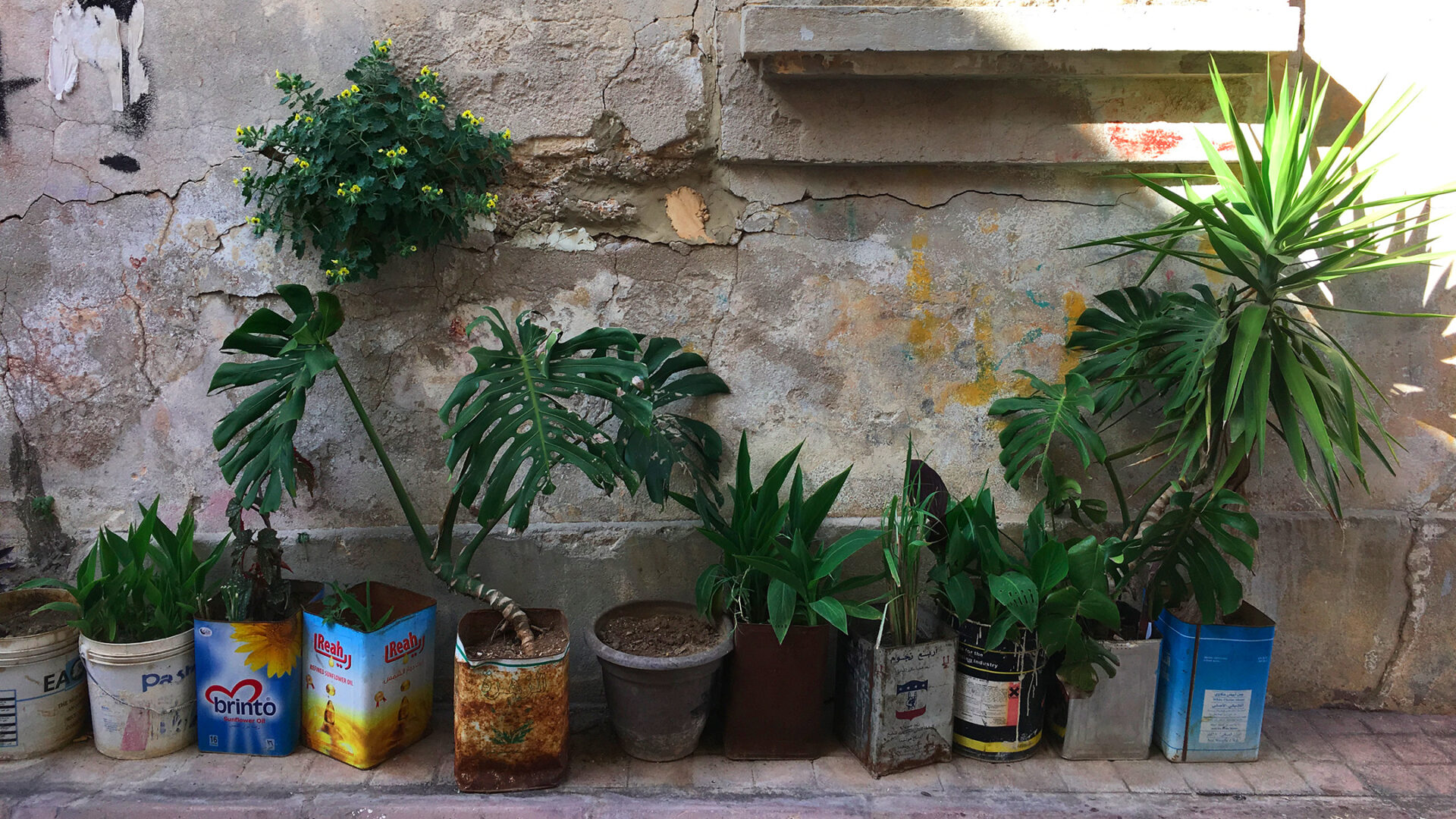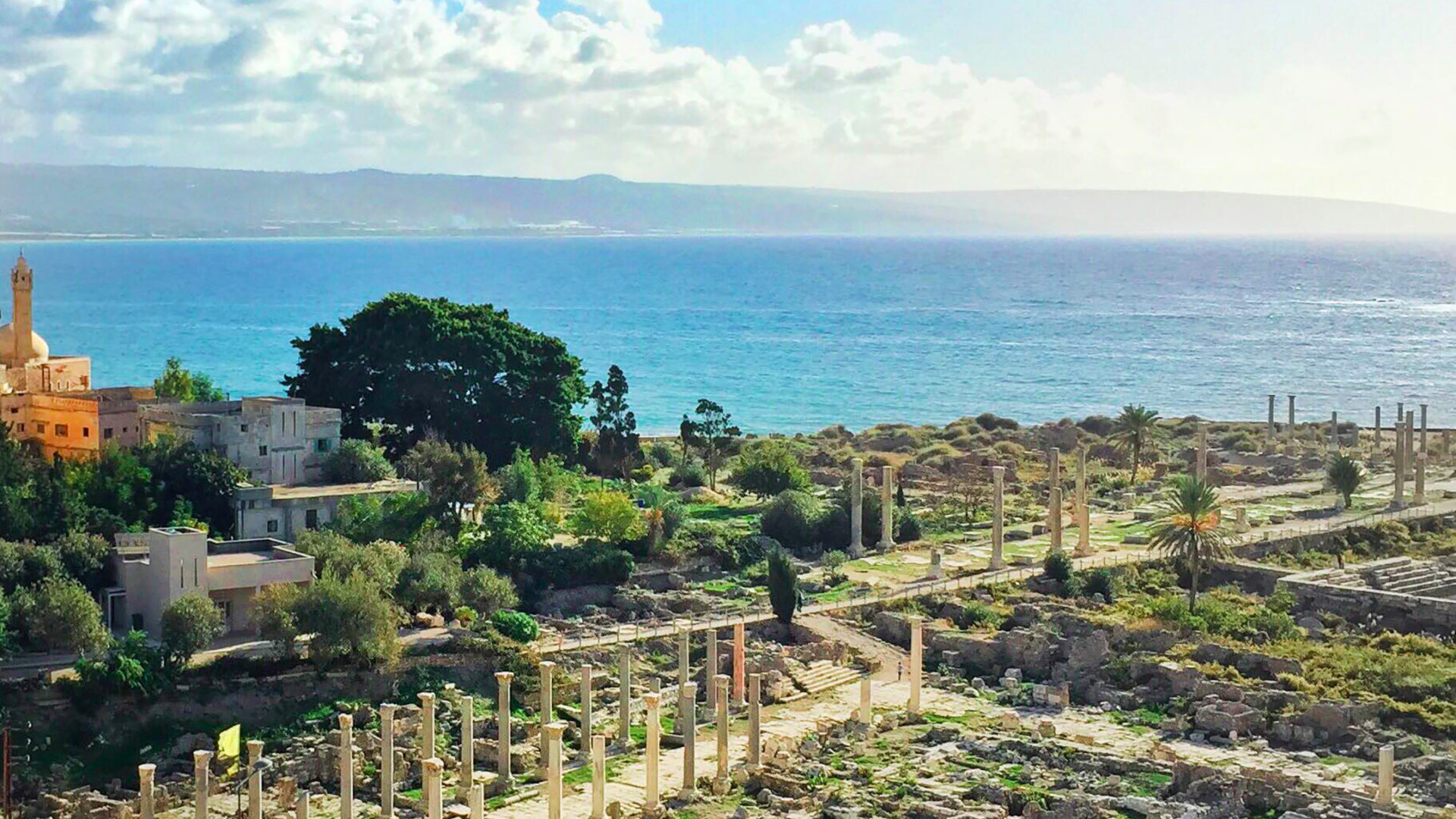Tyre · A port city
The sea is an essential part of Tyre, not least because it surrounds all corners of the peninsular city. Ask any local about their fondest memories, and al-bahr (the sea) is likely to feature atop the list — whether this includes strolls by the beach or spontaneous football matches with the neighborhood kids. Apart from being a beautiful topographical feature, the sea is also an economic asset. It’s perhaps most fitting to begin the journey at the Fishermen’s Port, which serves charming views of colorful boats, old homes, and boat repair shops.
The tradition of maritime trade is ingrained in the city’s history, dating back to Phoenician rule. Tyre was known as the “Metropolis of Phoenicia”, both for its beauty and for its vibrant trade ports, exporting local silk textiles, cotton, and glassware. In fact, “Tyrian purple” was the city’s claim to fame; a unique color extracted from the Murex snail that was worn as a mark of imperial rule. Though the city’s role in Mediterranean trade declined after the Crusades, the port remains a source of livelihood for the many fishermen who call it home. To enjoy some of Tyre’s fresh fish and a view of the harbor’s everyday activities, head to “Le Phenicien”, locally known as “Hadeed”.

Tyre · A diverse city
Next up are the old souks, located behind the port. They offer a full sensory experience—from the colorful storefronts to the sounds of hagglers and enthusiastic shoppers—as well as an architectural homage to Ottoman rule. A hidden gem to visit is the local favorite “Mahfouz”; a sandwich shop that values quality over quantity, offering five or six items on the menu generation after generation. A short walk from the crowded souks is Haret al-Massihiyi (the Christian Quarter); an agglomeration of winding streets, a historical church and colorful homes that make for a quaint backdrop and contrastingly quiet strolls.
Behind Haret al-Massihiyi is the Muslim Quarter, arbitrarily divided by a narrow road. Tyre’s religious divide is microcosmic of Lebanon’s larger struggles, where historically constructed sectarian differences resulted in territorial demarcations. Despite political and class conflicts, the heart of Tyre remains its people, whose hospitality and warmth are truly exemplary.
Tyre · A picturesque city
Visitors are likely to notice the vibrant cafe culture in the city, as locals enjoy coffee or tea, play tawla (backgammon) or cards, and share a nargile at their qahweh (cafe) of choice. Never wanting to be far from the sea, many choose to take their folding chairs and create makeshift qahwehs by the corniche.
For those who prefer to enjoy the Mediterranean in quieter surroundings, the inappropriately named Al-Kharab (“The Wreck”) area of the corniche offers families, lovers, and parties-of-one scattered benches and beautiful views. And for those who wish to relax and go for a swim, Al-Jamal is a short walk away. The rocky beach provides clear waters, the occasional sea turtle swimming, kayaking, as well as delicious fish and traditional mezza to eat. After all, Tyre isn’t referred to as Sayidat al-Bihar (Queen of the Seas) without reason. Aside from her unforgettable maritime experiences, the city has much to offer the lovers of history and archaeology.
Despite political and class conflicts, the heart of Tyre remains its people, whose hospitality and warmth are truly exemplary.
Tyre · A historical city
The Phoenician city was a centre for cultural production and the alphabet spread from its shores to Greece, thanks to Cadmus, son of Tyre. Perhaps one of the most memorable civilizations that later colonized the city is the Romans, and ruins of their magnificent architectural structures remain as testament. The Al-Mina archeological site reveals a large public bathhouse, a rectangular arena for spectator sports, Roman and Byzantine mosaics as well as impressive marble columns.

On the city’s mainland is the Al-Bass site (the name referring to its neighboring Palestinian refugee camp), home to a funerary complex, an archway, and a well-preserved hippodrome, built by Alexander the Great after he conquered the city. The latter structure is often used as a concert venue. The formidable sites position the city as one of the oldest in the world, dating back to the third century B.C.
Tyre · A city to visit
Tyre’s modern history is less glamorous. The large influx of people from neighboring villages and abroad, its role in the Lebanese-Israeli wars, as well as its predominant sectarian identity have overshadowed the city’s proud past with urban, political, religious, and class struggles. For some, Tyre is immortalized in its former glory, a Phoenician island city that was known for its beauty and wealth. For others, the city’s modern identity is entwined with political struggle and sectarian strife.
The truth is neither black nor white. What Tyre offers is a melange of both realities, coupled with exceptional warmth, hospitality, and a unique charm. Visitors today should consider Tyre a meeting place: a starting point to explore neighboring villages, a crossroads of past and present, an entwining of reality and romanticism, and an everlasting ode to the people and the sea that give it life.